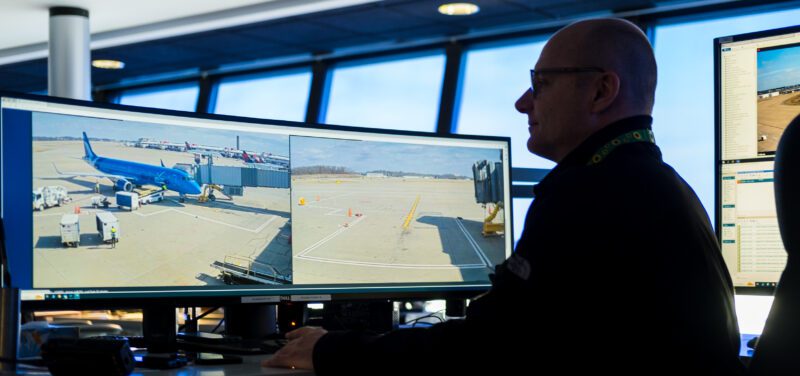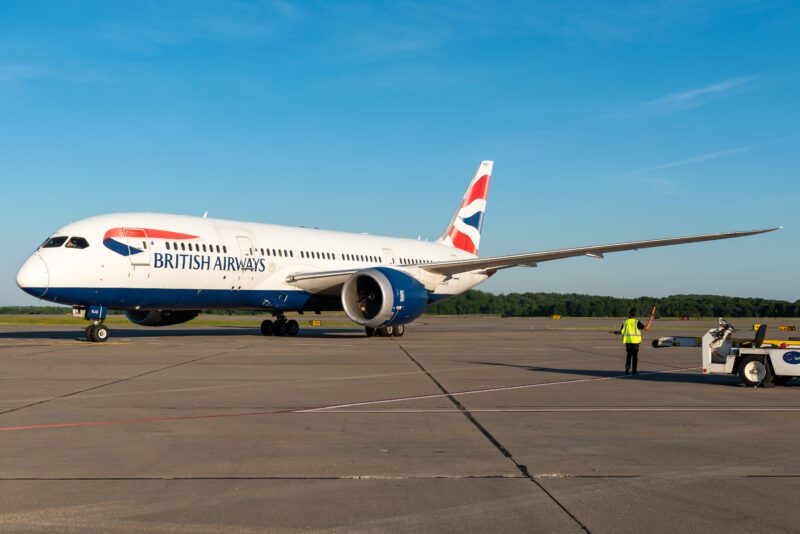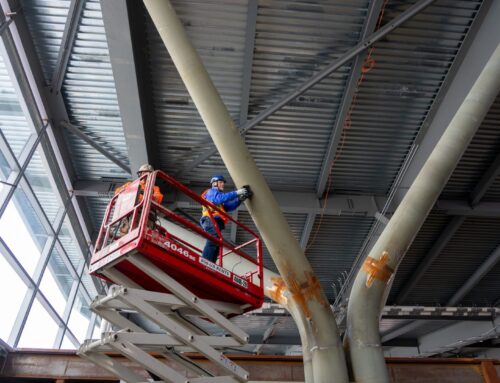IAG Tech Partnership with PIT Comes Into Sharp Focus
Synaptic Aviation’s computer vision ‘revolutionizing’ airline ramp operations
By Matt Neistein
Published February 12, 2024
Read Time: 5 mins

Aviation is one of the most regulated industries on the planet, and yet there is still so much of the operation that human beings simply don’t see despite looking right at it.
How long, for example, should it take an aircraft to park, for baggage to be loaded and unloaded, and for passengers to deplane and board, among other tasks?
Synaptic Aviation aims to definitively answer those questions and more, and, in partnership with global airline group IAG, has deployed its cutting-edge technology via the xBridge innovation program at Pittsburgh International Airport in order to open the industry’s eyes to a wealth of data it never knew existed.
Led by experienced aviation industry professionals and pioneers in cutting-edge technology, Miami-based Synaptic employs technologies like artificial intelligence models for computer vision to monitor ramp operations via cameras stationed at a gate. They record everything that happens and feed it back to a workstation that can synthesize the data almost instantly into actionable information for airlines and airports.
“We can train a computer on what it is we want it to see, and then we create timestamps for every activity,” said CEO Juan Gomez, who is also a licensed pilot. “In the old days, you did that by clipboard. So it’s the automation of that capture of activities.”
Data points can include how long it takes an aircraft to park, for baggage to be loaded and unloaded, passengers deplaned and boarded, positioning of ramp crew and more.
Gomez compares the system to wearing a smartwatch: “it measures things you never measured before.”
The workstation runs the data through various modeling algorithms and then uploads it to the cloud, where airline and airport employees can access it and run analytics and reports and even watch the recorded video with graphic overlays.
Staffers at PIT and IAG – the parent company of British Airways – have been trained on the system and are already using it to evaluate their operations. Installation only took a couple of weeks, and the xBridge staff’s proactive attitude and collaborative approach streamlined the process for Synaptic, said Robb D’Avignon, project management director.
“They never say, ‘Well, do you really need that extra camera?’ or ‘Why are we doing this?’” he said. “It’s, ‘Synaptic, tell us what you need and we’ll make it happen for you.’ It was one of the easiest installations I’ve ever been a part of.”

Marc Buranovsky, Manager, Airport Operations, utilizes Synaptic’s technologies to monitor Concourse D ramp operations on Feb. 7, 2024. Data captured by Synaptic can be synthesized almost instantly into actionable information for airlines and airports. (Photo by Beth Hollerich)
‘Pushing the technology’
IAG subsidiary British Airways returned to PIT in 2019 after a 20-year absence, and that air service partnership naturally grew to include innovation strategy, a priority for both organizations.
In 2023, IAG signed a memorandum of understanding with PIT to drive the aviation industry forward by developing technological solutions to safety, customer experience and operational efficiency challenges for both airlines and airports.
“As an airline, we’re pushing the technology, but we’re really keen that the airports are joining us on that journey,” said Thomas Cannell, program director, airports automation, for IAG Airports. “And that’s been something that’s quite exciting and progressive from Pittsburgh, that they want to go on that journey with us.”
Gathering clear and consistent data is a critical first step for IAG as it looks to evolve its operations, Cannell said. Up to now, documenting activity on the ramp was a subjective task, up to thousands of ramp managers around the world trying to manage staff near moving aircraft while taking notes on everything that’s occurring.
Understandably, Cannell said, that data isn’t always complete or accurate, and it can be subject to countless variables. Computers, on the other hand, eliminate virtually all of those problems and create a “baseline” for finding ways to become safer and more efficient.
“The beauty of the technology is it’s focused on the same thing, every flight, every gate,” he said. “It’s a really important starting step to revolutionizing what we do on the ramp. And that’s where the benefit comes in.”
One example of that benefit, according to Gomez, is jet bridges: no ground handler or airline could tell you how quickly one of them should connect to an aircraft. It’s simply not an operation that gets measured by ramp crews.
But once an airline records thousands of turnarounds, and the data shows that the average time for that process takes 55 seconds, now the carrier has actionable information. If a turnaround takes five minutes, crews can flag it as an outlier and review the footage to see what caused the delay.
In fact, an airline could be alerted to the issue in real time and begin corrective measures as it’s happening, and then modify procedures for the future, if needed.
“The idea is that you can be ahead of the game and not have to explain a delay or an incident,” Gomez said. “The idea is to prevent it.”

A British Airways 787-8 Dreamliner from London Heathrow is marshaled into its gate at PIT on June 24, 2022. (Photo by Evan Dougherty)
Productive partnerships
For PIT, working with a globally respected brand like IAG and a state-of-the-art technology firm like Synaptic is becoming standard procedure.
xBridge, launched in late 2020, works with both established and startup technology companies to develop tech solutions for aviation and other industries onsite at PIT.
Ventures have included automated floor scrubbers, teleoperated vehicles, airborne threat detection and a self-contained food waste “digester,” which caught Cannell’s eye during a recent visit to Pittsburgh.
“I just think it’s such great innovation,” he said. “It’s the sort of thing where we need to make sure that we’ve got people coming in with things like that. And for PIT to engage with them is great because it’s about being much more than an airport. It’s our society.”
For xBridge Director Cole Wolfson, the Synaptic project is exciting because of what it could mean not just for PIT, but the aviation industry as a whole.
“At xBridge, we work with companies to test new technologies not just for PIT, but also for our partners and the industry,” he said. “By testing these technologies here, we are certainly able to better understand how they can enhance our operations and passenger experience, but that’s not the only goal.
“More broadly, success for us is testing and demonstrating these technologies for the industry, so that they may make a significant impact far beyond Pittsburgh.”
The value of shortening and even preventing delays for airlines is almost incalculable. Network schedules are extremely precise, and one delay in one airport can create a ripple effect that may ultimately impact thousands of people and the carrier’s bottom line.
Aircraft engines idling on the ramp waste fuel and generate unnecessary carbon emissions. Ramp crews in extreme weather face increased health risks the more time they spend executing a turnaround.
IAG recognizes the myriad benefits of having an unblinking eye on a crucial part of its business, Cannell said.
“If you’re able to save five minutes of delay on every flight, then you are talking millions and millions (of dollars) because of the impact across the whole operation.”






